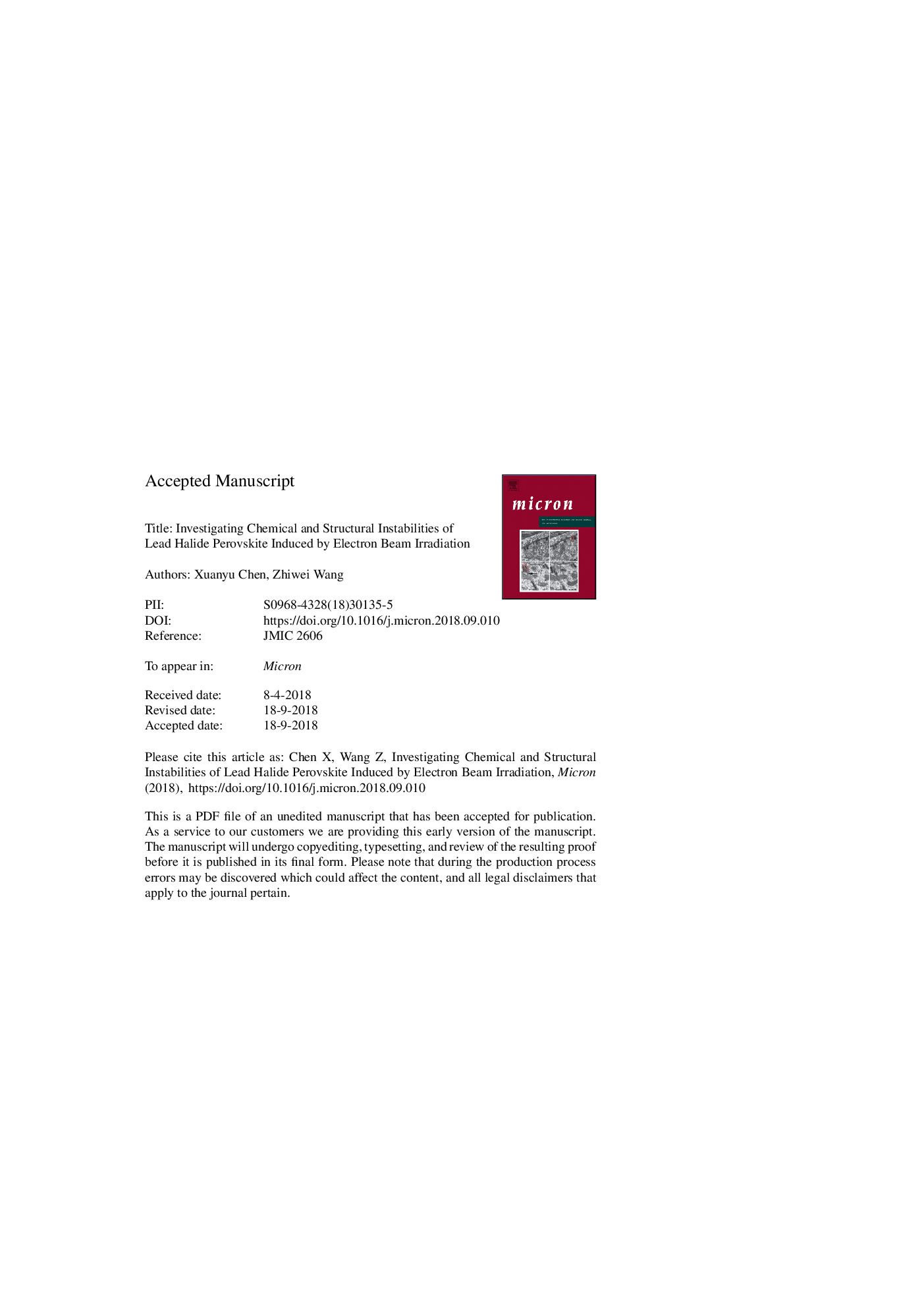| Article ID | Journal | Published Year | Pages | File Type |
|---|---|---|---|---|
| 11026633 | Micron | 2019 | 25 Pages |
Abstract
Chemical and structural instabilities of lead halide perovskites remain a major obstacle to their large-scale applications in photovoltaic solar cells and optoelectronic devices. Herein we report on a comparative investigation of electron beam irradiation effects on (all-inorganic) CsPbI3 and (organic-inorganic hybrid) CH3NH3PbI3 halide perovskite thin films by transmission electron microscopy. Upon continuous electron beam irradiation with high dose rates, CsPbI3 exhibits rather rapid morphological change and compositional degradation within irradiated regions, which are attributed to the radiolysis effect and probably assisted by electron beam heating and Coulomb forces. In contrast, for the freestanding, polycrystalline CH3NH3PbI3 thin films, significant structural damage mainly occurs on/outside the periphery of the irradiated regions, while, within the irradiated areas, the structural configurations appear rather intact. The electron beam induced electric field effect is suggested to be the primary reason for the unusual damage phenomenon. The building up of induced electrical fields in CH3NH3PbI3 is probably pertinent to its some unusual structural properties (e.g., rotational dynamics of organic cations), but should be also promoted by the unavoidable modifications of physical properties during the film preparation and electron beam focusing. The study provides an insight for exploring the fundamental origin of structural instabilities and property degradation of halide perovskites.
Related Topics
Physical Sciences and Engineering
Materials Science
Materials Science (General)
Authors
Xuanyu Chen, Zhiwei Wang,
